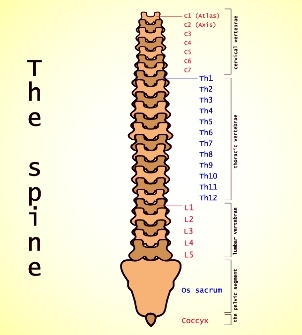
Osteochondrosis is a disease of the spine in which the intervertebral discs (and then the vertebral bodies, joints and ligaments) lose their normal functionality.
The lumbar spine is very susceptible to diseases such as osteochondrosis.
Symptoms of lumbar osteochondrosis are often difficult to isolate because the course of the disease takes many forms.
symptoms
At the beginning of development, the symptoms are very mild: Patients usually complain of pain in the lumbar region, which is aggravated by movement and bending.
1-2 years after the onset of lumbar osteochondrosis, the pain can spread to the buttocks or groin area. The lumbar spine is stiff.
Lumbar osteochondrosis is slow to develop, but periods of exacerbation become more frequent over time and symptoms worsen as more vertebrae are affected.
The most common type of lumbar osteochondrosis is chronic lumbodynia. With this form, the following symptoms are observed:
- Symptoms appear in periods and waves.
- Slight pain in the lumbar spine, worse in the morning
- Stiff back.
- The pain subsides after 30 minutes, but even a slight exertion can provoke it again.
- A sudden increase in pain is possible, "lumbago", usually also due to physical exertion - acute lumbago. Symptoms of acute lumbago can last 1 to 2 weeks before symptoms of chronic lumbago appear.
Treatment of lumbar osteochondrosis
The same symptoms can be signs of different illnesses, and the illness may not progress according to the textbook. Do not try to heal yourself - consult your doctor.
A week of hospitalization is indicated during an exacerbation. The patient is advised to rest in bed. It is recommended to use crutches to relieve the lumbar spine.
Various spinal column tractions and back massages are performed to treat lumbar osteochondrosis.
Drug therapy includes analgesics, sedatives, and vitamins. In some cases anesthesia block is indicated.
Physiotherapy includes ultraviolet irradiation of the lower back, novocaine electrophoresis, and ultrasound therapy.
Remedial gymnastics for lumbar osteochondrosis is a mandatory point of treatment. It is supposed to strengthen the back muscles.
Exercises include flexion and extension, abduction and adduction, and panning. Exercise in the pool is most effective as water reduces stress on the spine.
If the symptoms of lumbar osteochondrosis worsen or in combination with a fracture of the spine, therapeutic gymnastics consists of breathing exercises.
At home, a good effect in the treatment of lumbar osteochondrosis is achieved by daily lubrication of painful areas with iodine and pepper and mustard plasters.
From traditional medicine for lumbar osteochondrosis, warming compresses with birch leaves or black radish juice are used.
Proper nutrition can significantly improve the condition.

















